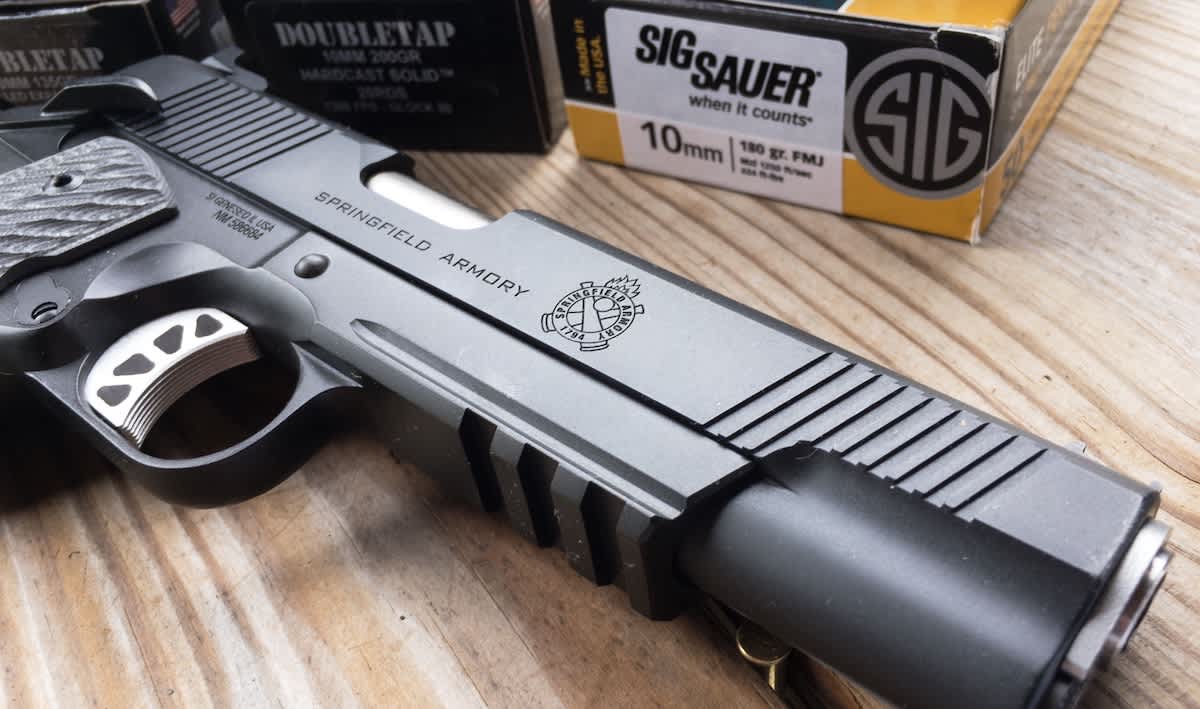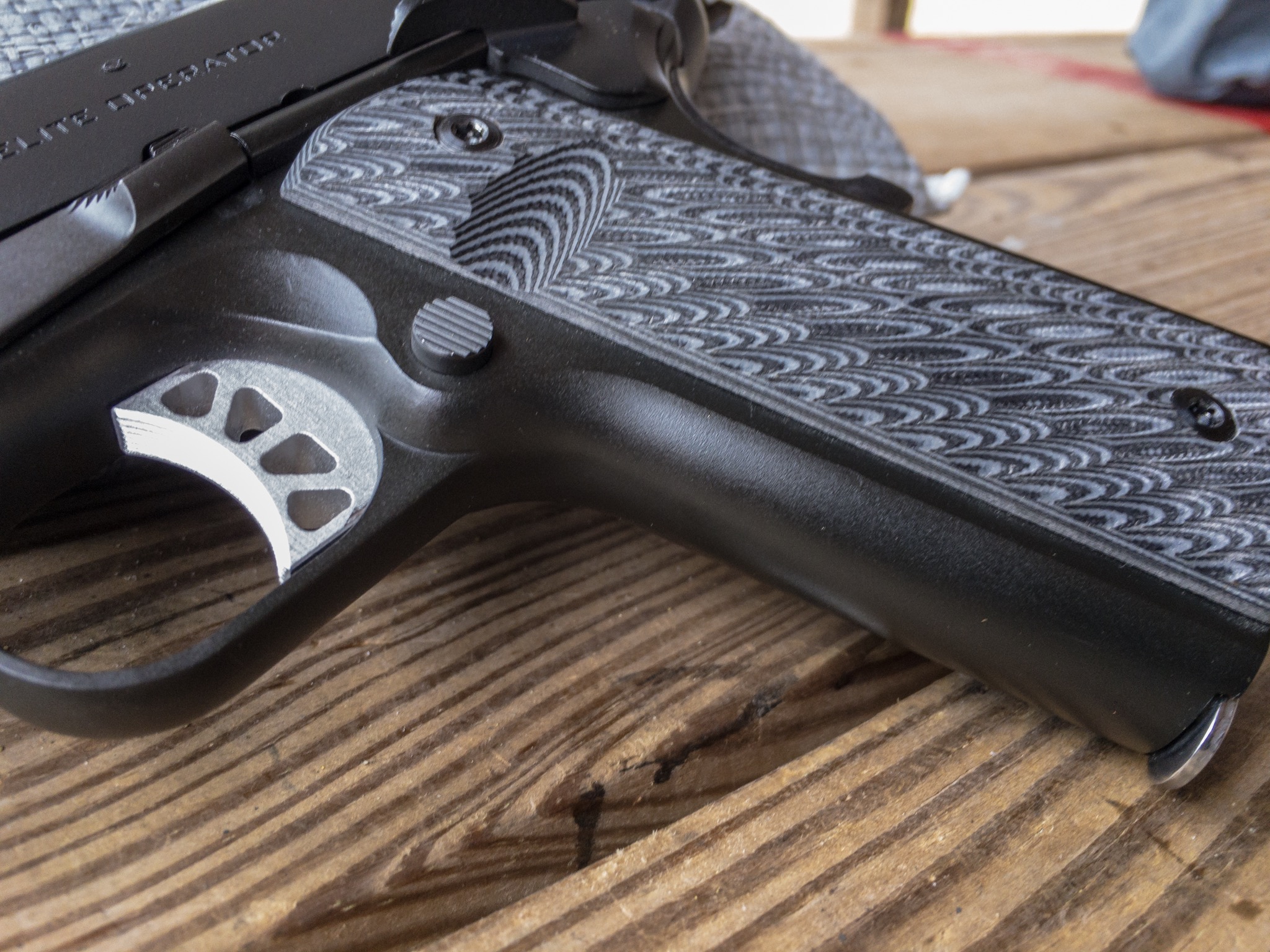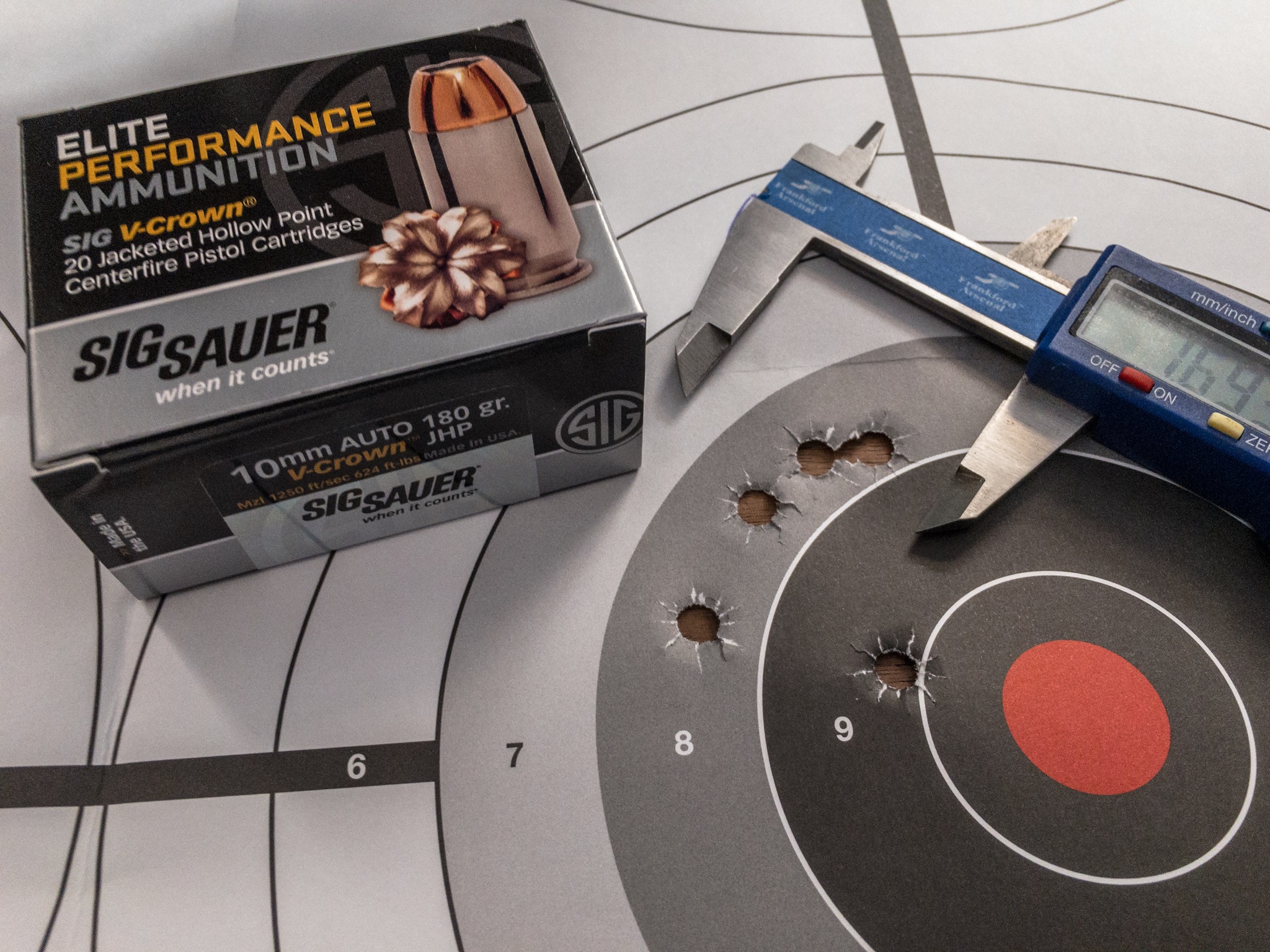Springfield Armory 1911 Range Officer Elite Operator 10mm
Tom McHale 11.19.18

If you ever find yourself competing in a brass flinging contest, we’ve found the perfect gun for you. The new Springfield Armory Range Officer Elite 10mm tosses brass as good as any Olympic Hammer Throw contestant. OK, so maybe aeronautical brass engineering isn’t the most useful criteria for selecting a handgun, but it did add some entertainment to our testing sessions. On a more serious note, let’s just say this new 10mm 1911 pistol from Springfield Armory has some serious mojo.

A Quick Tour
Like the current Springfield Armory Range Officer Elite Operator models chambered in 9mm and .45 ACP, the new 10mm version includes match grade everything. Frame, slide, barrel, and more are all machined to exacting tolerances to create a “step up” 1911 pistol. One difference that the 10mm variant offers compared to the traditional .45 is capacity. I was able to stuff eight rounds in each of the two included steel magazines. Add one in the chamber, and this pistol packs nine instead of eight total for the .45 version. Be aware that you might be able to “fit” nine rounds in the magazine – I was – but it’s not designed for that so you may experience issues if you try.
The Operator model is coated with the company’s Black-T finish which is the same that’s used on pistols from the Custom Shop. The Operator also sports a three-slot rail up front for attachment of operator-type things like lights and lasers. Front cocking serrations are cut to match the standard ones on the back.

For you 1911 traditionalists, you’ll be happy to hear that there is no full-length recoil spring guide rod. This pistol takes down just like John Moses Browning’s (may he rest in peace) original. In fact, I did just that during my shooting session with no tools other than my grimy fingers. I’ve had a Springfield Armory 1911 TRP for years, and while I don’t really mind the full-length guide rod in it, I have to admit the ease of quick takedown on this new pistol was a plus.
The front sight is a red fiber optic tube encased in a steel housing. As such, the ~ ½-inch pipe can be replaced with a new pipe in your favorite color such as yellow, orange, or green. I found that the red was perfect for me. It’s fast and easy to pick up, even in dreary overcast conditions, but it’s not so bright as to be distracting or unfocused. The rear sight, also dovetail mounted for windage adjustment, is fixed and features a square notch flanked by two white dots which do not illuminate. That’s a good thing as it helps you focus on the front without distraction. The notch area is enlarged just forward of the “U” cut to allow more light and angular visibility to either side and the back of the rear sight body is serrated to reduce glare. Last but not least, the leading edge of the rear sight has a vertical surface so that you can rack the slide on a belt, shoe, or nearby most any other object.

The trigger is set at five pounds for service use. It’s got a very short take-up with no grit. A little extra pressure and you’ll get a smooth break. There’s no detectable stacking, so the breakpoint is a surprise, although you’ll get used to the length of travel from take-up to the break with use. For me, the trigger is good to go; I wouldn’t do a thing to it.
Ammo Observations
A 10mm pistol, even an all steel one like this, has a bit of “wake you up in the morning” feel to it. In fact, that’s kind of the point. While the .40 S&W has been (mostly unfairly) labeled with derogatory comments like “40 Slow and Weak,” one can never make the same observation about the 10mm, even though it uses the exact same projectiles. The longer case and slightly higher operating pressures allow for more boom and associated velocity. Every load varies, so to make a quick comparison using one the Sig Sauer V-Crown ammo I tested, the .40 S&W flings a 180-grain jacketed bullet at 985 feet per second according to factory specs. The 10mm version has a bullet of the same weight moving at 1,250 feet per second. That’s a substantial difference. If you’re an energy geek, that’s 388 foot-pounds compared to a whopping 624.

I tested a variety of ammo with The Range Officer Elite 10mm including.
Sig Sauer FMJ 10mm 180-grain
Sig Sauer V-Crown 10mm 180-grain
Doubletap Controlled Expansion JHP 10mm 135-grain
Doubletap Controlled Expansion JHP 10mm 150-grain
Doubletap Equalizer JHP 10mm 190-grain
Doubletap Hardcast Solid 10mm 200-grain
The DoubleTap 135-grain ammo was an interesting option. It had noticeably less recoil than the more standard bullet weight loads. While the noise and flash were just as impressive as the others, it was much easier to control. With the lighter bullet at high velocity, it will expand aggressively and results in less penetration than the heavies, so it’s an interesting self-defense option.
The two Sig Sauer choices felt identical to me, and I suspect that’s by design. The full metal jackets are less expensive for practice and training. The V-Crown option offers the same ballistics but with a premium self-defense expanding projectile. I’ve had great success with the V-Crown line across a variety of caliber and weight offerings. The dual-stage hollow point design facilitates rapid initial expansion but controls it so the rounds penetrate properly and don’t over-expand.

The DoubleTap Equalizer was an unique performer. It features a 135-grain controlled expansion hollow point bulle with a surprise. Beneath that in the case is a 65-grain disk. Yes, each trigger press launches two distinct projectiles. Shooting at 10 yards, the two impacted within an inch or so of each other. When I stretched the distance out to 25 yards, the 135-grain primary projectiles produced great groups and perfect point of impact, but most of the disks traveled off the paper. That’s to be expected given the design of this cartridge is intended for close-range defensive use such as in-home defense.
Last but not least, the DoubleTap 200-grain hard cast load is useful not just for handgun hunting, but protection in the woods from big and tough critters. The hard cast bullet will penetrate deep.
Velocity
After watching the spent brass leave the earth’s gravitational field, I just had to run my assortment of ammo through a chronograph to see just how much more juice this pistol was delivering compared to a .40 S&W. Shooting multiple rounds of each ammo type and averaging the results, I measured the following.
| Ammunition | Velocity (fps) | Energy (foot-pounds) |
| Sig Sauer FMJ 10mm 180-grain | 1,182.2 | 558.7 |
| Sig Sauer V-Crown 10mm 180-grain | 1,186.3 | 562.6 |
| Doubletap Controlled Expansion JHP 10mm 135-grain | 1,494.3 | 669.5 |
| Doubletap Controlled Expansion JHP 10mm 150-grain | 1,340.3 | 598.5 |
| Doubletap Equalizer JHP 10mm 190-grain | 1,172.7 | 580.2 |
| Doubletap Hardcast Solid 10mm 200-grain | 1,132.7 | 569.8 |
Accuracy
I haven’t yet run across a Springfield Armory gun that’s not accurate, and that’s saying something. I don’t say that subjectively. Whenever possible, I mount a handgun scope to test guns using a UM Tactical Rail Mount to remove all possible shooter and optical error when shooting 25-yard groups. It’s a great way to see what a gun can really do. This one didn’t disappoint. I shot a couple of five-shot groups of each ammo type using the somewhat unusual scope configuration and averaged the results. Here’s how it did with various ammo types.
| Ammunition | Five Shot Group, 25 Yards (inches) |
| Sig Sauer FMJ 10mm 180-grain | 2.0 |
| Sig Sauer V-Crown 10mm 180-grain | 1.77 |
| Doubletap Controlled Expansion JHP 10mm 135-grain | 1.61 |
| Doubletap Controlled Expansion JHP 10mm 150-grain | 1.58 |
| Doubletap Equalizer JHP 10mm 190-grain | 1.61 |
| Doubletap Hardcast Solid 10mm 200-grain | 2.1 |

I’m not new to Springfield Armory 1911 pistols. I’ve bought a couple including the 1911 TRP and a few different 1911 EMP 9mm models. Just as none of those have ever disappointed, so goes this new 10mm. I’ve always wanted a sweet 10mm 1911, and this fits the bill.
Oh, and the specifics on all that brass launching? After our shooting session with all the ammo previously listed, we were picking up brass anywhere from 20 to 36 feet away in about the four o’clock direction from the shooting bench. Yeah, it’s got some power.
MSRP: $1,145

